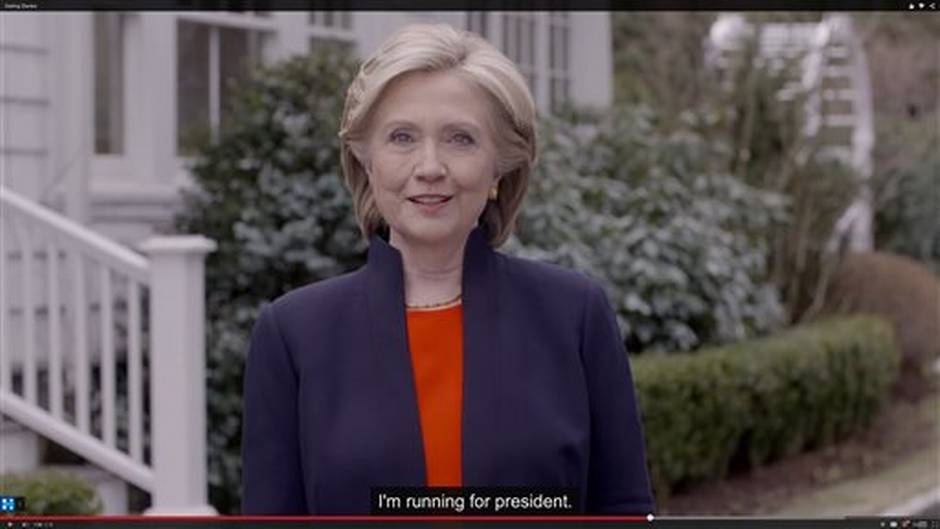By Evan Halper
Tribune Washington Bureau.
WASHINGTON
Hillary Rodham Clinton announced Sunday that she is running for president, launching her campaign with a video on her website that replaced months of hints with a declaration that started the campaign on a populist note.
“Americans have fought their way back from tough economic times, but the deck is still stacked in favor of those at the top,” Clinton said in the video.
“I am hitting the road to earn your vote.”
The widely anticipated announcement began Clinton’s second run for the White House. The former secretary of state is expected to face only token opposition for the Democratic nomination but what is likely to be a close-fought general election as the Democrats seek to win the White House for a third consecutive term.
The launch frees Clinton to start courting voters in states that hold early primaries, as well as to aggressively raise money. Her travel schedule includes visits to Iowa and New Hampshire over the next few days.
Unlike 2008, when she faced high-profile opponents, most viable rivals for the nomination have stepped aside for Clinton this time, an unusual gesture for a candidate who is not a sitting president or vice president and a sign of Clinton’s political potency. Polls so far have shown overwhelming support for her among Democrats.
Democrats hope that a lack of serious opposition within the party will enable Clinton to head into the general election with a clear advantage, absent the damaging political bruises that tough primaries often leave. The relative unity among Democrats allows Clinton from the start to look for themes that will motivate the party’s supporters while appealing to less partisan voters who can be crucial to winning a general election.
But there is also danger in an easy path to the nomination. The nominee Republicans pick will have been battle-tested and vetted by an intraparty race against several well-funded opponents. Clinton will likely not have that often-valuable dress rehearsal, which can afford a nominee opportunities to falter and recalibrate while the stakes are lower.
As Clinton prepared to launch her campaign, advisers emphasized that she would not take any votes for granted. They are eager to avoid the missteps the candidate made in the 2008 race. In that primary, she entered the race as the clear favorite. But she proved less successful at connecting with voters than Barack Obama, who ultimately bested her.
Clinton built that campaign around her impressive credentials in public service, arguing that no other candidate could match her experience as a U.S. senator and first lady. But she miscalculated how voters would perceive her and struggled to make a personal connection and overcome the perception among some voters that she felt entitled to the nomination.
Clinton is expected to address the shortcomings of her 2008 campaign by focusing heavily on the parts of her biography less familiar to voters, particularly her modest upbringing.
Democratic strategists are also looking for the campaign to put more emphasis this time on Clinton’s potential to make history as the first female president –– a big selling point with many voters, particularly women.














































































































































































































































































































































































